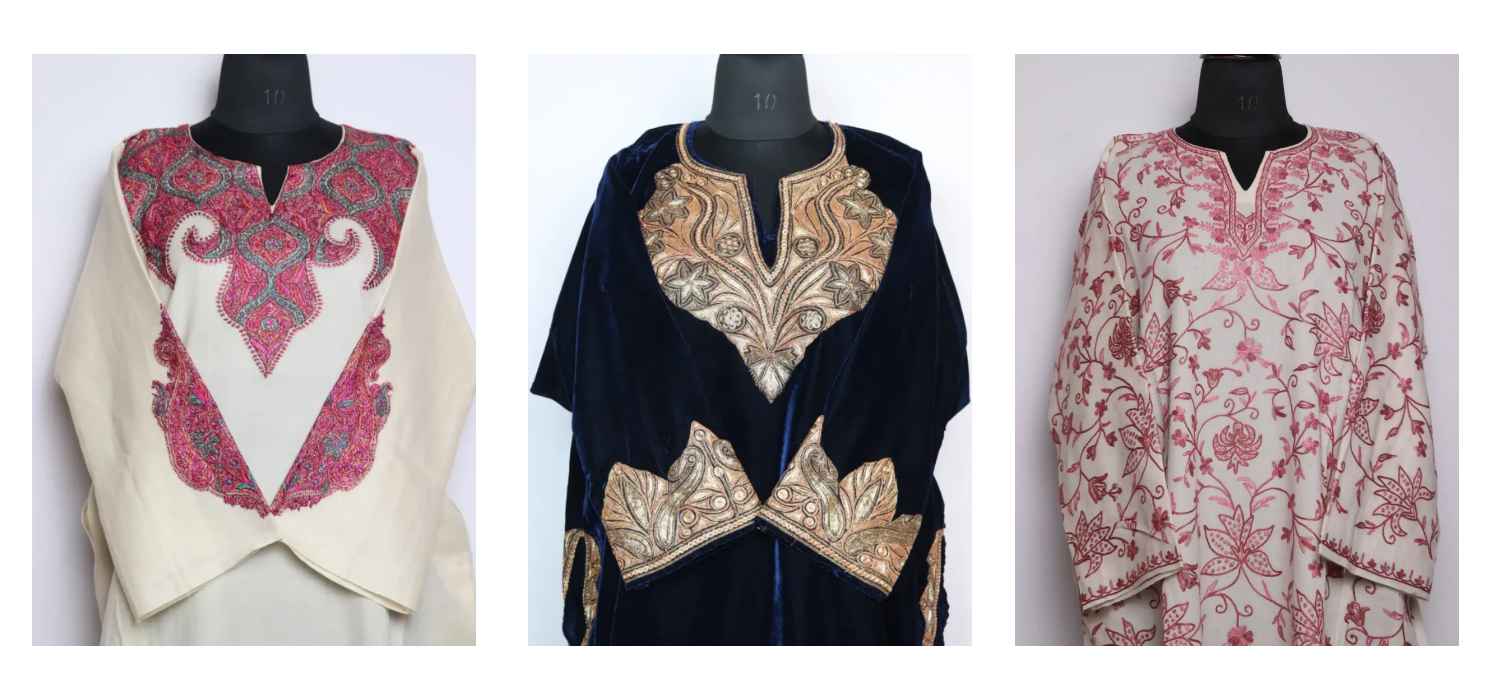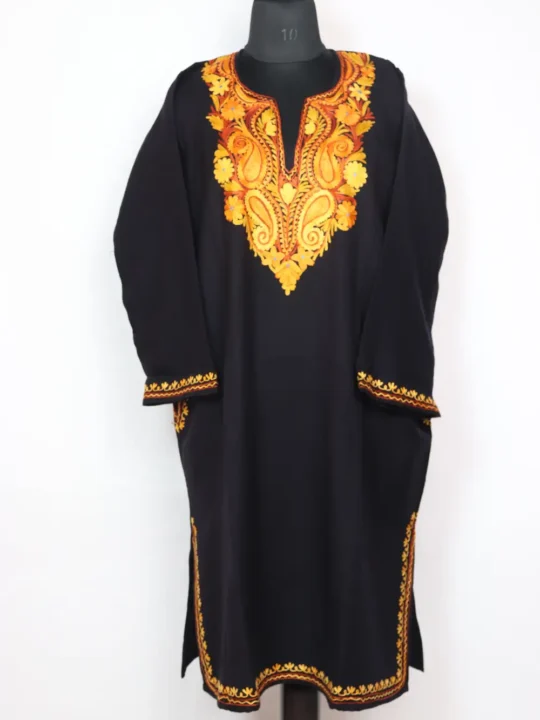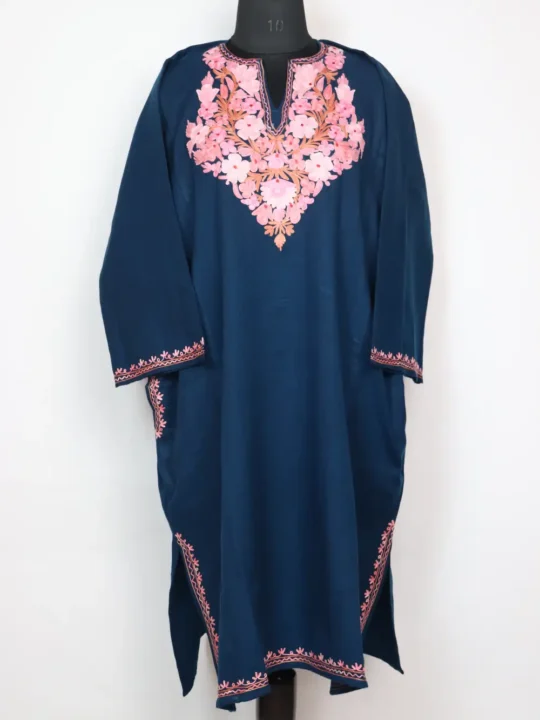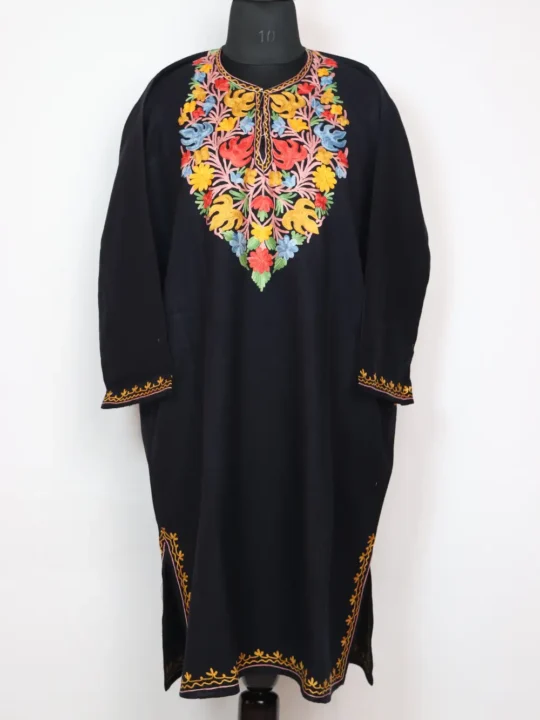Kashmiri Culture, Kashmiri Online Shopping
Different Types of Kashmiri Embroidery: Tilla, Sozni & Aari Work
Kashmiri art, especially embroidery on apparel, is celebrated worldwide for its exquisite craftsmanship and timeless beauty. Among the many traditional forms of Kashmiri embroidery, the three most distinguished techniques are Tilla Work, Sozni Work, and Aari Work. Each of these represents a unique blend of creativity, tradition, and artistic precision, reflecting the deep-rooted cultural heritage of Kashmir.
Tilla Work: The Royal Glow of Gold and Silver
Tilla Work is one of the most luxurious forms of Kashmiri embroidery, traditionally done using gold or silver metallic threads. Artisans carefully stitch these threads onto fine fabrics such as Pashmina, velvet, tweed, or silk, creating intricate floral and paisley patterns that shimmer beautifully in light.

This art form was historically reserved for royal families and special occasions, symbolizing grandeur and elegance. Even today, tilla work adorns wedding outfits, pherans, shawls, and bridal wear, giving them a rich, opulent look. The delicate glimmer of the metallic thread against soft fabric brings a regal touch that has made it one of the most cherished crafts of Kashmir. It is of two types: Hand tilla and machine tilla.
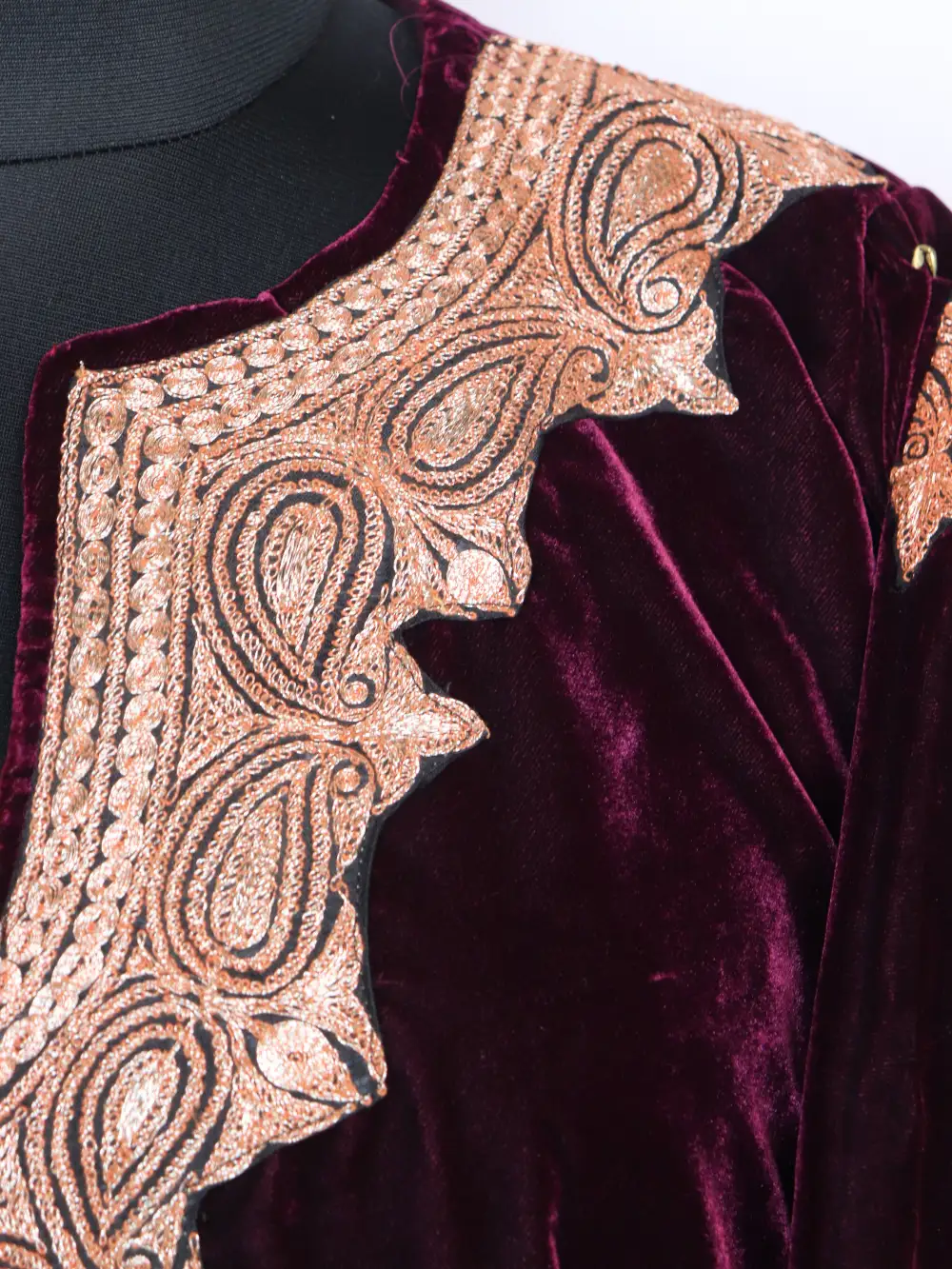
Buy Kashmiri Tillawork products online
Sozni Work: The Art of Finesse and Patience
Sozni embroidery, also known as needle embroidery, represents the soul of Kashmiri handwork. It is done using extremely fine needles and silk threads, where artisans create minute, detailed designs often inspired by nature, such as flowers, leaves, and vines.
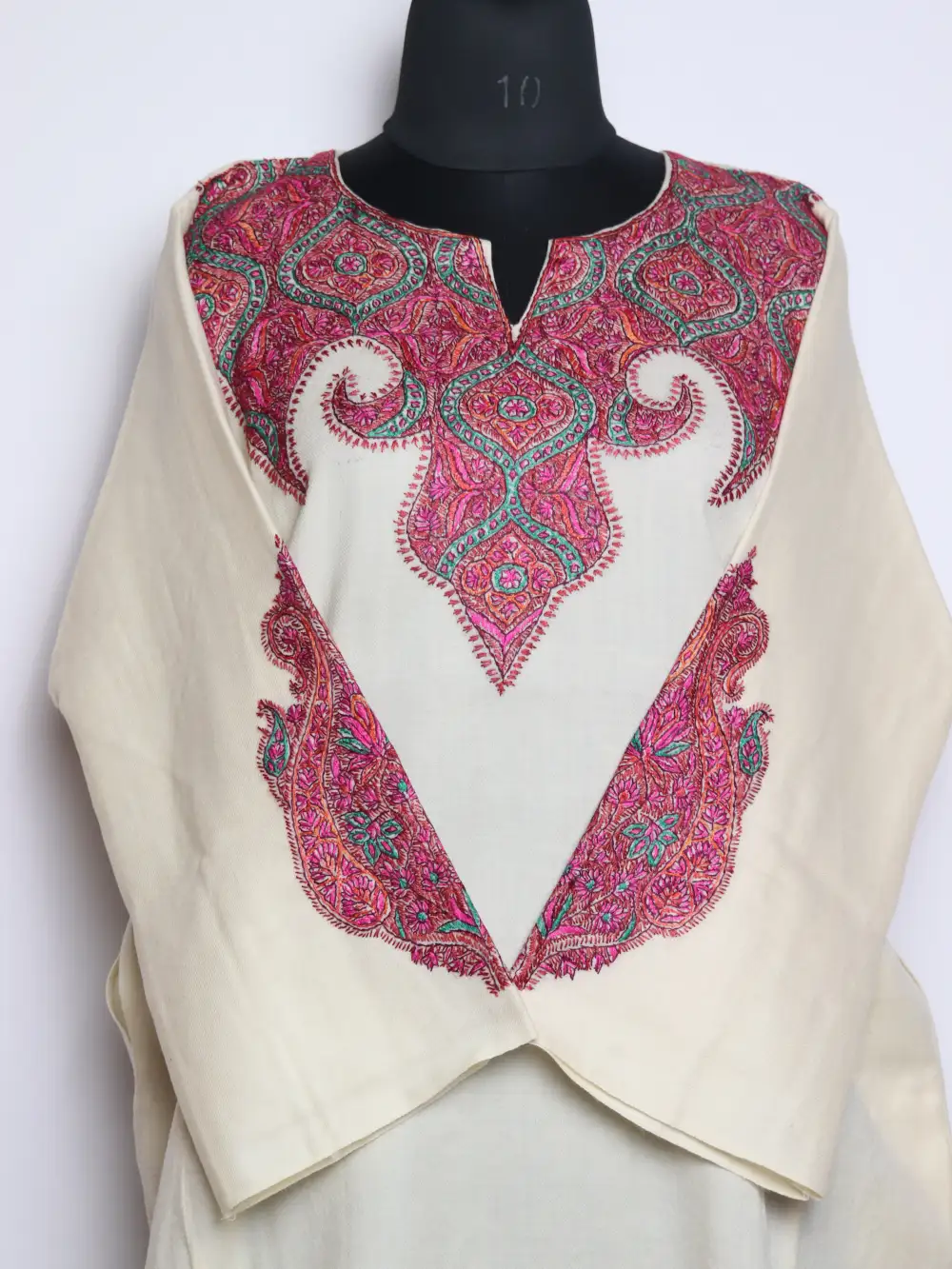
Unlike tilla work, Sozini relies not on metallic shine but on subtle beauty and precision. It is most commonly seen on Pashmina shawls and fine woolen fabrics such as raffal pherans, where the embroidery is so delicate that both sides of the cloth often look identical. Sozni work demands immense skill, concentration, and months of effort, making every piece a true labor of love and devotion.

Buy sozni work products here
Aari Work: The Vibrance of Thread and Rhythm
Aari Work is known for its bold and rhythmic chain stitches made with a special hooked needle called an aari. This technique allows artisans to create vivid, flowing designs, especially floral patterns, vines, and motifs with colorful threads that bring the fabric to life.

Aari work is versatile and is used on shawls, kurtas, cushion covers, wall hangings, and home furnishings. On the latter, it’s also called as crewel work. The raised texture and lively colors give it a three-dimensional effect, making it visually captivating. This art form beautifully combines traditional skill with modern aesthetics, ensuring its lasting popularity in both local and international markets.
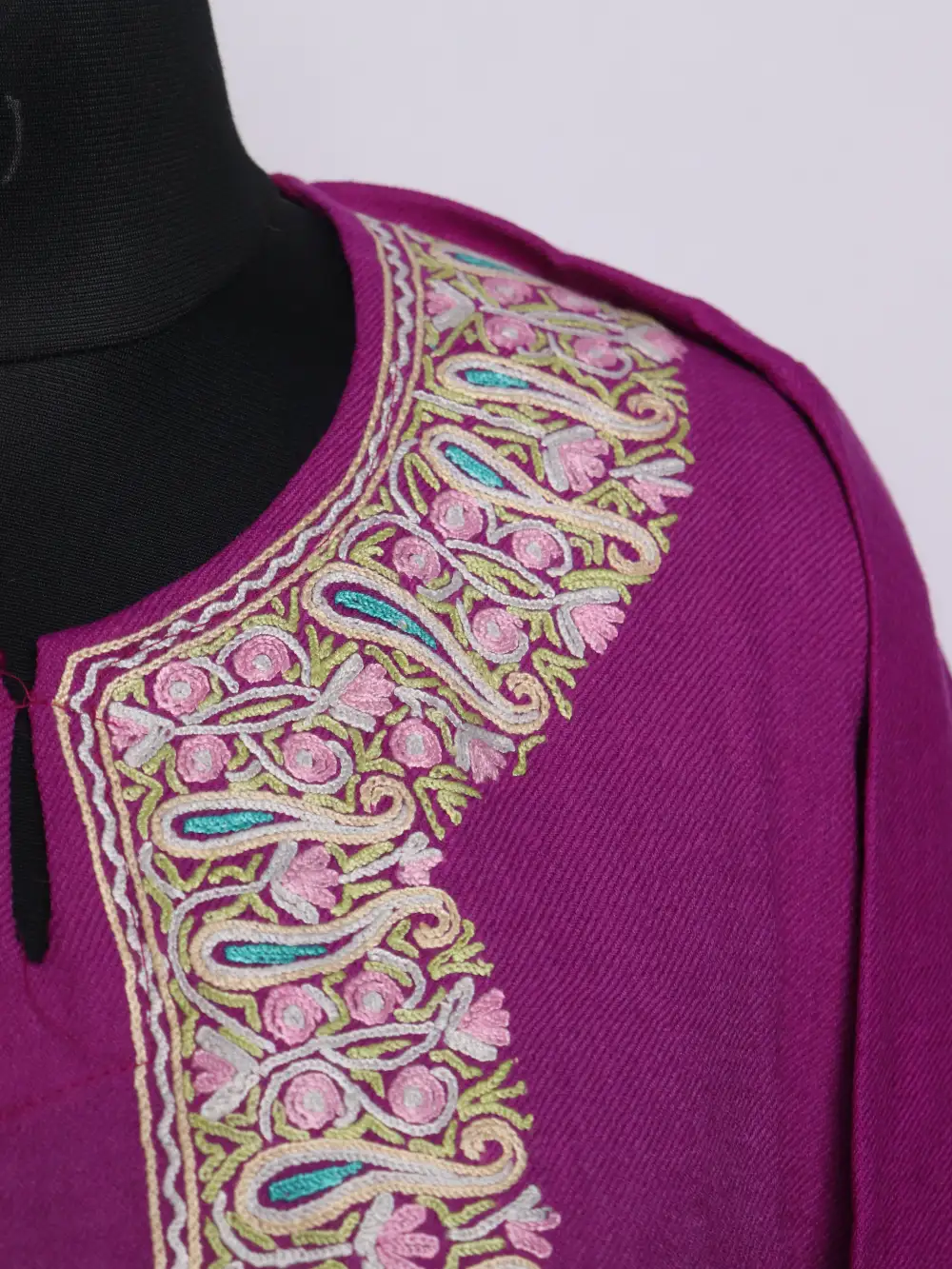
While all three styles Tilla, Sozni, and Aari fall under the umbrella of Kashmiri embroidery, each possesses its own identity and artistic charm. Tilla Work shines with metallic elegance, Sozni Work reflects the art of patience and perfection, and Aari Work radiates color and vibrancy. Together, they form the essence of Kashmiri artistry, representing not just fashion but a living heritage passed down through generations. These timeless crafts continue to enchant the world, preserving the heart and history of Kashmir in every thread.
Author Fatima Nazir

